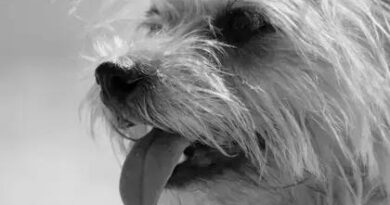What is best grooming practices
Understanding Grooming Practices for Dogs
When it comes to maintaining the health and appearance of your canine companion, understanding the best grooming practices is essential. Grooming not only enhances your dog’s physical appearance but also plays a crucial role in their overall health. Regular grooming helps to prevent matting, reduces shedding, and allows for early detection of skin issues or parasites. By establishing a consistent grooming routine, you can ensure that your dog remains comfortable and healthy.
The Importance of Regular Brushing
One of the best grooming practices is regular brushing. Depending on your dog’s coat type, brushing can be done daily or weekly. For long-haired breeds, daily brushing is vital to prevent tangles and mats. Short-haired breeds may require less frequent brushing, but it still helps to remove loose fur and dirt. Brushing not only keeps your dog’s coat looking its best but also promotes healthy skin by distributing natural oils throughout the fur.
Bathing Techniques for Optimal Cleanliness
Bathing your dog is another critical aspect of grooming. However, it’s important to know how often to bathe your dog, as over-bathing can strip the coat of essential oils. Generally, dogs should be bathed every 4 to 6 weeks, but this can vary based on their activity level and coat type. When bathing, use a dog-specific shampoo to avoid skin irritation. Ensure that you rinse thoroughly to remove all soap residue, which can lead to skin problems.
Nail Trimming: A Necessary Grooming Practice
Nail trimming is often overlooked, but it is one of the best grooming practices for dogs. Long nails can cause discomfort and lead to health issues, such as joint pain or difficulty walking. Ideally, nails should be trimmed every 3 to 4 weeks. If you’re unsure how to trim your dog’s nails, consider seeking help from a professional groomer or veterinarian. Regular nail care is essential for your dog’s mobility and comfort.
Ear Cleaning: Keeping Your Dog’s Ears Healthy
Cleaning your dog’s ears is an important grooming practice that should not be neglected. Dogs with floppy ears are particularly prone to ear infections. Regularly check your dog’s ears for dirt, wax buildup, or signs of infection. Use a vet-recommended ear cleaner and cotton balls to gently clean the outer ear. Avoid inserting anything deep into the ear canal, as this can cause injury. Keeping your dog’s ears clean can prevent infections and promote overall ear health.
Dental Care: An Often Ignored Grooming Aspect
Dental care is a crucial part of grooming that many pet owners overlook. Regular brushing of your dog’s teeth can prevent dental disease and bad breath. Aim to brush your dog’s teeth several times a week using toothpaste specifically formulated for dogs. Additionally, consider providing dental chews or toys that promote oral health. Maintaining your dog’s dental hygiene is essential for their overall well-being.
Choosing the Right Grooming Tools
Using the right grooming tools is vital for effective grooming practices. Invest in high-quality brushes, combs, nail clippers, and shampoos suited for your dog’s coat type. For example, slicker brushes work well for long-haired breeds, while bristle brushes are better for short-haired dogs. Having the appropriate tools will make the grooming process easier and more enjoyable for both you and your dog.
Professional Grooming Services: When to Consider Them
While many grooming tasks can be done at home, there are times when professional grooming services are beneficial. If your dog has a particularly challenging coat, requires specialized grooming techniques, or you simply lack the time, a professional groomer can help. They have the experience and tools necessary to provide a thorough grooming session, ensuring your dog looks and feels their best.
Creating a Positive Grooming Experience
To make grooming a positive experience for your dog, start slowly and use plenty of praise and treats. Introduce grooming tools gradually and allow your dog to become familiar with the process. Regular grooming sessions can help your dog associate grooming with positive experiences, making it easier for you to maintain their grooming routine. Patience and consistency are key to successful grooming.
Monitoring Your Dog’s Skin and Coat Health
As you groom your dog, take the opportunity to monitor their skin and coat health. Look for any unusual lumps, bumps, or changes in skin texture. Regular grooming allows you to catch potential health issues early, which can lead to more effective treatment. If you notice anything concerning, consult your veterinarian for advice. Keeping an eye on your dog’s skin and coat is an essential part of responsible pet ownership.



